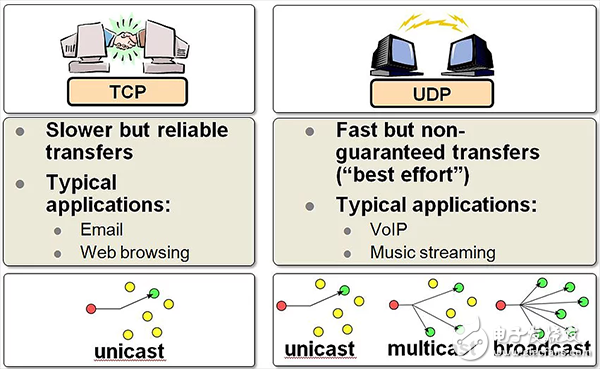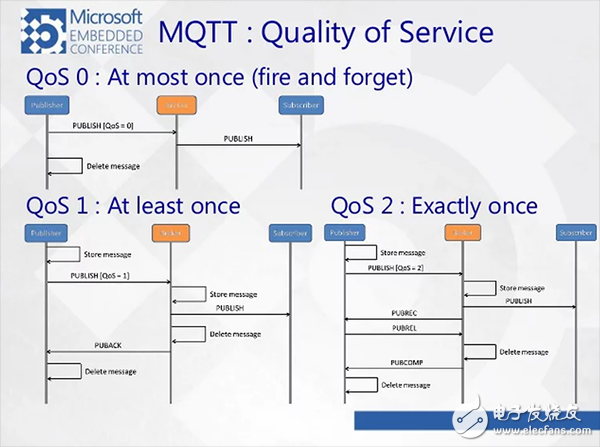For software companies, the IoT model represents a fundamental shift in both hardware design and the services they offer. One of the most impactful changes is the communication protocol, which serves as the backbone of device interaction and data exchange.
A communication protocol can be thought of as a shared language that enables devices to interact seamlessly. While it may seem like an open system, protocols are actually built on structured rules that ensure consistent and meaningful exchanges. In distributed systems, where different components operate independently across multiple locations, these protocols play a crucial role in maintaining coordination and reliability. As systems grow more complex, having a common set of instructions becomes essential for effective communication.
The rise of the Internet of Things (IoT) has been closely tied to the development of Cyber-Physical Systems (CPS), which connect physical devices to the internet to enable real-time data exchange. This integration is vital for the successful implementation of IoT solutions. However, it also adds complexity to existing communication protocols and network infrastructures, requiring more robust and scalable solutions.
The expansion of IoT has opened up numerous possibilities, but one of the most promising is Machine-to-Machine (M2M) communication over the internet. Connecting devices to the web is no longer just about human interaction—it’s becoming a natural part of system functionality. However, this shift means that communication between devices and the internet often relies on less reliable and slower methods, making protocol selection even more critical.

In addition to communication protocols, the Internet Protocol architecture also includes the TCP/IP stack, which manages data transfer between computers. The three-way handshake process ensures a stable connection: the client sends a request, the server responds, and the client confirms the connection. This method guarantees reliable data transmission, though it can be slower due to the verification steps involved.
Another key protocol is UDP (User Datagram Protocol), which prioritizes speed over reliability. It doesn’t require a connection before sending data, making it faster but less secure. For M2M applications where quick prototyping is needed, UDP is a popular choice due to its minimal overhead and efficiency.
HTTP (HyperText Transfer Protocol) is widely used in web-based interactions. It operates on a client-server model, allowing users to request and receive information from servers. Since it runs on top of the TCP/IP stack, it provides a reliable and well-established framework for web communication.

MQTT (Message Queuing Telemetry Transport) is a lightweight protocol designed specifically for IoT applications. It uses a publish-subscribe model, allowing devices to communicate efficiently over TCP/IP networks. Its simplicity and low resource usage make it ideal for constrained environments. MQTT supports Quality of Service (QoS) levels, ensuring message delivery even in unreliable conditions.
Imagine a digital bulletin board where messages can be posted and viewed by others. That’s essentially how MQTT works. Devices can publish data under specific topics, and other devices can subscribe to those topics to receive updates. This makes it highly efficient for real-time monitoring and control in IoT systems.
MQTT also features a "Last Will and Testament" mechanism, which allows a client to send a predefined message if it disconnects unexpectedly. This helps maintain network integrity and facilitates automatic recovery in wireless sensor networks.

CoAP (Constrained Application Protocol) is another important protocol in the IoT space. Designed for resource-constrained devices, it is based on the REST model and operates over UDP rather than TCP. This makes it more efficient and suitable for low-power, low-memory devices.
CoAP mimics HTTP in terms of usability, making it easy for developers to implement. It allows for simple requests, such as reading sensor data, similar to how a web browser interacts with a server. However, unlike HTTP, CoAP is optimized for small devices and offers better performance in constrained environments.
One of CoAP’s key features is its ability to discover nodes in a network, which is especially useful in self-healing and autonomous systems. It also supports discovery of redundant nodes, improving the scalability and resilience of wireless sensor networks.
While CoAP is not as reliable as HTTP or MQTT, its small 4-byte header makes it ideal for continuous data streams, such as environmental monitoring. It strikes a balance between efficiency and functionality, making it a valuable tool in the IoT ecosystem.
Outdoor Led Display screens for rental-- Die casting cabinet
LED technology is the latest and the best in terms of the audio visual technologies out there and it is still evolving. There is a strong emphasis in making LED display screens energy efficient, cost efficient and light weight apart from other quality requirements. Hence,Stage LED screen cabinets are also now expected to be lighter in weight. This need has resulted into the gradual shift from the iron cabinet, aluminum cabinet, to the cast-aluminum and die cast aluminum as the weight of the cabinet is lighter. Cast aluminum and die cast-aluminum cabinets are the latest of the cabinets used for LED casing.
The cast aluminum and die cast-aluminum cabinets have high strength and high tenacity. They are highly efficient, provide excellent heat dissipation, energy conservation and environmental protection. Because of their outdoor usage, Rentel led display cabinet is made as a waterproof cabinet of leasing cast aluminum. They are lightweight and ultrathin. They are quite flexible for easy packaging and lifting. They have a high refresh rate, high grayscale and are widely applied to the stage renting. They are easy and simple to install and thus help you save on precious time and man power as one-person can easily do the insallation. Cabinet splicing and wiring connection is fast and reliable. Not only great in looks dept. it can be easily dismantled. Casting Aluminum and die Casting Aluminum Cabinet also have better deformation resistance property.
Outdoor Led Display screens for rental-- Die casting cabinet
LED technology is the latest and the best in terms of the audio visual technologies out there and it is still evolving. There is a strong emphasis in making LED display screens energy efficient, cost efficient and light weight apart from other quality requirements. Hence,Stage LED screen cabinets are also now expected to be lighter in weight. This need has resulted into the gradual shift from the iron cabinet, aluminum cabinet, to the cast-aluminum and die cast aluminum as the weight of the cabinet is lighter. Cast aluminum and die cast-aluminum cabinets are the latest of the cabinets used for LED casing.
The cast aluminum and die cast-aluminum cabinets have high strength and high tenacity. They are highly efficient, provide excellent heat dissipation, energy conservation and environmental protection. Because of their outdoor usage, Rentel led display cabinet is made as a waterproof cabinet of leasing cast aluminum. They are lightweight and ultrathin. They are quite flexible for easy packaging and lifting. They have a high refresh rate, high grayscale and are widely applied to the stage renting. They are easy and simple to install and thus help you save on precious time and man power as one-person can easily do the insallation. Cabinet splicing and wiring connection is fast and reliable. Not only great in looks dept. it can be easily dismantled. Casting Aluminum and die Casting Aluminum Cabinet also have better deformation resistance property.
Rental Led Display, Rental Led screen,Stage Led Screen, Led Display screen
Shenzhen Priva Tech Co., Ltd. , https://www.privaled.com